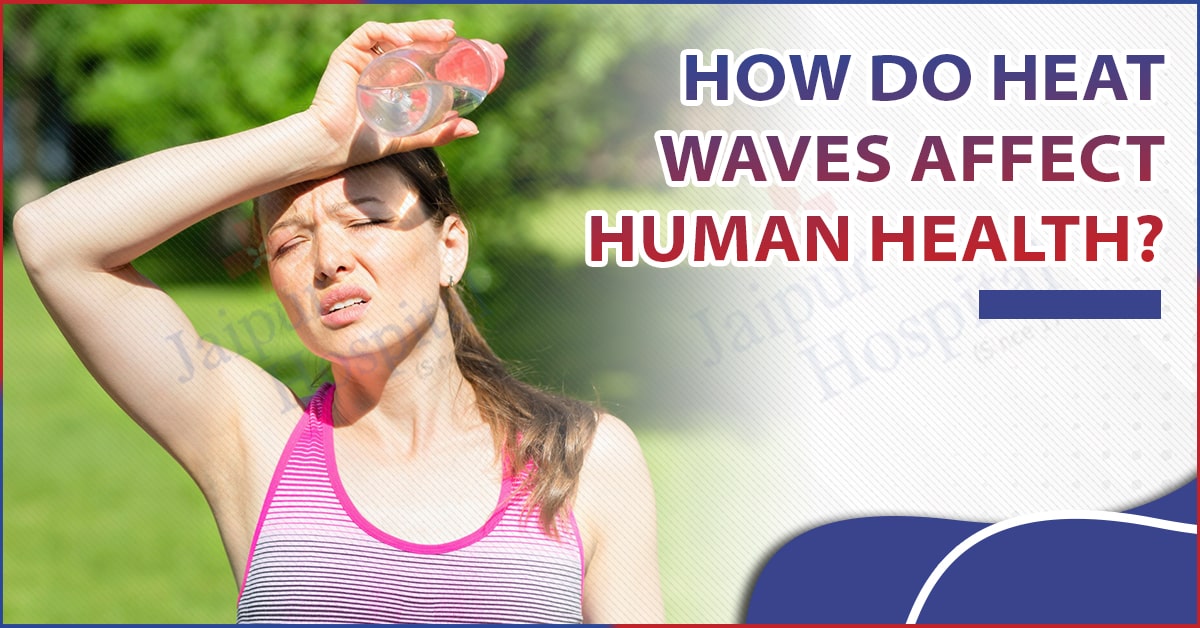Introduction: The Rising Threat of Heat Waves
Lately, heat waves are increasing in frequency and intensity within very short times and are becoming one of the biggest environmental and public health problems in the world today. In essence, these temperature extremes, which are caused mainly by climate change, have transitioned from rare anomalies to recurring hazards with devastating consequences.
They range from droughts up to intense wildfires and increasing death rates, up to strains in infrastructure, due to which the whole dimension of life, work, and planning is being redefined for communities. It is becoming vital for life and the environment to learn about causes, impacts, and possible mitigation regarding heat waves, as temperatures are continuing to rise throughout the globe.
What Are Heat Waves?
It is usually defined more in terms of severe weather with prolonged, excessively hot days and nights, with daily temperature maximums usually situated above normal for six hours or so and matched by equally high humidity.
Although national boundaries determine the definition of a heat wave, a broadly defined period with abnormally hot conditions could mean anything between three days of above-average temperature to a week or more of such weather. For example, in several parts of the world, a heat wave is called when the temperature soars above 40°C (104°F) for more than three consecutive days.
Heat waves are more broadly defined than just a single hot day: Heat waves are classified as a heat health and environmental risk with a number of directly concerning social implications. Sustained heat can compromise normal functioning, augment the potential for heat illnesses, and increase overhead on energy grids with demand for air conditioning. Climate change is now increasing the length, frequency, and intensity of heat waves, making them an increasing global danger.
You Can Read Also: 10 Reasons Why Regular Health Checkups Can Save Your Life
Common Health Effects of Heat Waves
Heat waves can have serious and sometimes fatal impacts on human health, particularly for vulnerable populations such as the elderly, children, outdoor workers, and individuals with pre-existing medical conditions. Prolonged exposure to extreme heat affects the body’s ability to regulate its internal temperature, leading to a range of health issues. Some of the most common effects include:
- Heat Exhaustion: There is a lot of sweating, weakness, dizziness, nausea, and headaches; heat exhaustion occurs when extensive amounts of water and salt are lost from the body over a more extended period of high temperatures.
- Dehydration: High losses of water through sweating and, without adequate intake, can very quickly cause the body to become dehydrated. This is because fatigue and dizziness set in together with a decline in physical performance.
- Heat Stroke: The higher dangerous case could be called heatstroke; as soon as the body temperature rises over 40°C (104°F), the body would go to a very severe and possibly even fatal temperature increase. The symptoms of said problems would be confusion or unconsciousness, a rapid heartbeat, and even organ failure. Medical treatment must be immediate therapy.
- Sunburn: Painful burning skin will occur with the exposure of excessive ultraviolet rays of the sun during the heat waves. More such burned surfaces can increase the risk of skin cancer in the long run.
- Breathing Disorders: Breathing becomes increasingly troublesome for asthma and respiratory disease sufferers caused by heat waves, which tend to worsen the atmospheric impurities and, thus, increase the ground-level ozone concentration.
- Aggravation of Chronic Illnesses: High temperatures aggravate pre-existing diseases and deteriorate health in vulnerable individuals. Most importantly, dehydration remains the most important health effect of increasing temperatures in most cases.
You Can Read Also: Bloating During Ovulation: Symptoms, Causes, and Treatment Options
Who Is Most at Risk?
Anyone can be affected by heat waves, but some groups are at much greater risk due to age, health conditions, residence, or profession. Identifying at-risk populations is crucial for targeted prevention and timely intervention. The most at-risk groups include:
- Elderly Individuals: Older adults sometimes possess a diminished ability to regulate body temperature; chronic health conditions can already hinder heat response, and medications can interfere with it as well.
- Infants and Young Children: Children’s sweating ability diminishes with age and increases internal heat production, making them vulnerable to heat-related ailments, especially if left unattended in environments such as hot cars or poorly ventilated rooms.
- People with Chronic Illnesses: Heat waves can pose complications for people suffering from cardiovascular diseases, diabetes, respiratory ailments, and kidney diseases.
- Outdoor Workers and Laborers: They are mostly subjected to sunlight, heat, and heavy exertion, which are factors that aggravate their potential for dehydration and heatstroke.
- Low-Income Communities: People without air-conditioning, shelter, or even clean water could be struggling to stay cool and hydrated, thus increasing their vulnerability during prolonged heat exposure.
- Individuals with Disabilities: Those suffering from a physical or cognitive disorder would have difficulties in the detection of heat symptoms, maintaining hydration levels, or calling for help during extreme situations.
- Athletes and Exercisers: Exercising with high intensity in hot weather rapidly raises core temperature, causing risk for overheating and dehydration.
- Homeless Populations: With greatly limited access to shelter or cooling resources, they remain with direct exposure to the threats posed by extreme heat.
How to Protect Yourself from Heat Waves
Preventive measures during a heat wave can significantly reduce the risk of heat-related illnesses and complications. Whether indoors or outdoors, it’s important to stay cool, stay hydrated, and stay informed. Here are essential tips to protect yourself and others during extreme heat:
- Stay Hydrated: Drink plenty of water throughout the day, even if you’re not thirsty. Avoid alcohol, caffeine, and sugary drinks, as they can contribute to dehydration.
- Avoid Direct Sunlight: Remain indoors when the sun is strongest (generally between 11 a.m. and 4 p.m.). If you have to be outside, go into the shade and wear a wide-brimmed hat and sunglasses.
- Wear Light Clothing: Wear light-colored, loose-fitting, and lightweight clothing to keep your body cool and enable sweat to evaporate.
- Use Fans and Air Conditioning: Use fans, air conditioners, or visit air-conditioned public facilities like malls, libraries, or community centers if your house is not properly cooled.
- Cool Down with Showers or Wet Cloths: Take cool showers or apply damp cloths to the skin, particularly on pulse points such as the wrists, neck, and forehead.
- Avoid Strenuous Activity: Limit or schedule physical activity to cooler portions of the day. If you have to exercise, do so in a shaded, well-ventilated area and take regular breaks.
- Check on Vulnerable People: Check on elderly relatives, neighbors, babies, and people with health problems to make sure they are safe and cool.
- Keep Your Home Cool: Close curtains or blinds during the day, particularly on windows with direct sunlight. Utilize reflective window coverings if possible.
- Never Leave Anyone in a Parked Car: Temperatures within a closed vehicle can rise very quickly and prove fatal. Children, pets, and elderly persons should never be left in a parked car, even for a brief moment.
Climate Change & the Future of Heat Waves
Climate change and heat wave intensity have been closely associated by scientists and global agencies alike. Warming the Earth by retaining the heat due to greenhouse gas emissions, the layer of atmosphere is being warmed, thus creating a prime environment for the occurrence of heat waves in increasingly frequent, prolonged, and intense forms around the globe.
- Increased Global Temperature: With increasing greenhouse gas emissions, global average temperatures rise, and even slight increases at the global scale may lead to increased counts of extreme heat in close range.
- Prolongation and intensification of heat waves: Climate change is inciting heat waves longer in duration, at times gracing larger regions, with very much the same intensity and frequency in all-time records.
- Urban Heat Islands and Inequities: Urban areas, paved with concrete and asphalt, hold heat, thus creating a situation where urban areas are hotter than rural ones. Low-income communities face the brunt since these areas tend to have fewer cooling options.
- Effects on Ecosystems and Infrastructure: Heat impacts agriculture, peaks energy demand, interrupts water supply, and causes damage to roads and rails, and power systems.
- To Be Done Immediately: The world needs to cut carbon emissions, enhance renewable energy, and create climate-resilient infrastructure while simultaneously preparing and implementing effective heat response plans to avoid the exacerbation of heat waves.
Conclusion: Stay Cool & Stay Safe
Heat waves are increasing in intensity and frequency every year, largely due to the effects of climate change. Some measures that one can adopt for cooling off and keeping safe include drinking lots of fluids, avoiding strenuous activities outdoors for the hours of strongest sunlight, wearing light clothing, and checking in on those who might be vulnerable, such as the aged, sick, or very young.
Medically, heat stroke is an emergency and a medical condition that falls under the Department of Emergency Medicine as well as Internal Medicine due to its effect on the system affecting the body on its very important systems, like the cardiovascular and neurological systems.
In response to the rising threat, Jaipur Hospital has been an early mover in raising awareness campaigns and providing time-critical treatment for heat-related illnesses. The hospital’s specialized departments have all the necessary arrangements for emergency treatments, and their ongoing initiatives are instrumental in disseminating knowledge amongst communities to mitigate the health effects of extreme heat.


